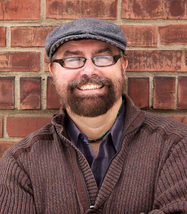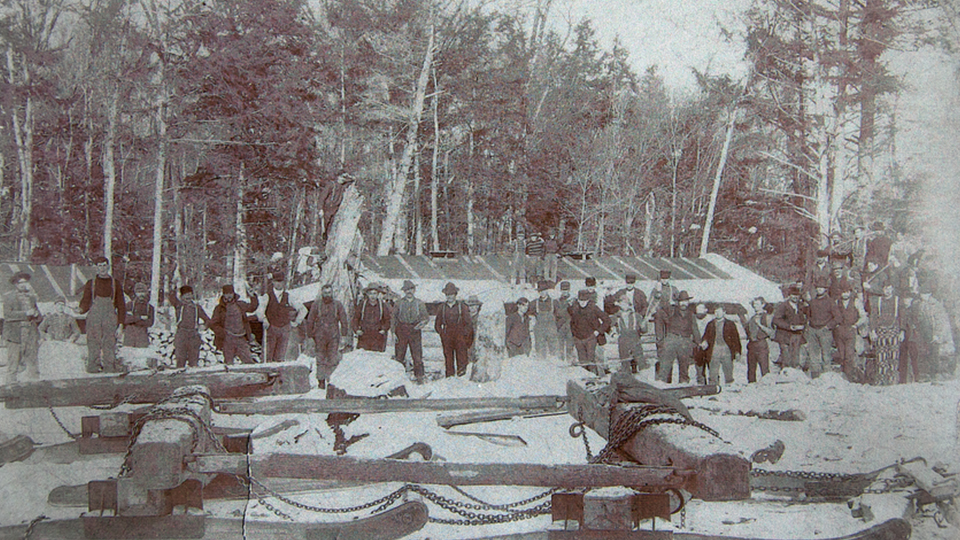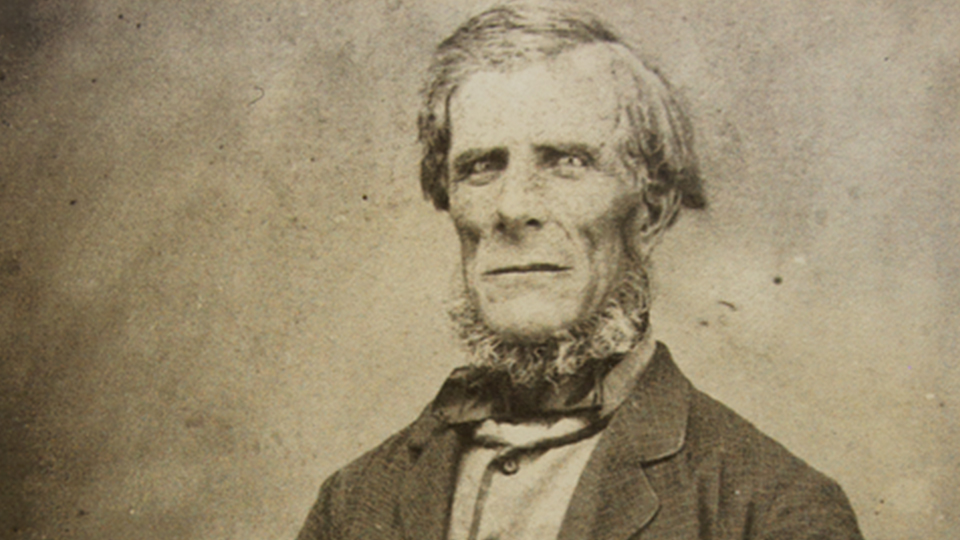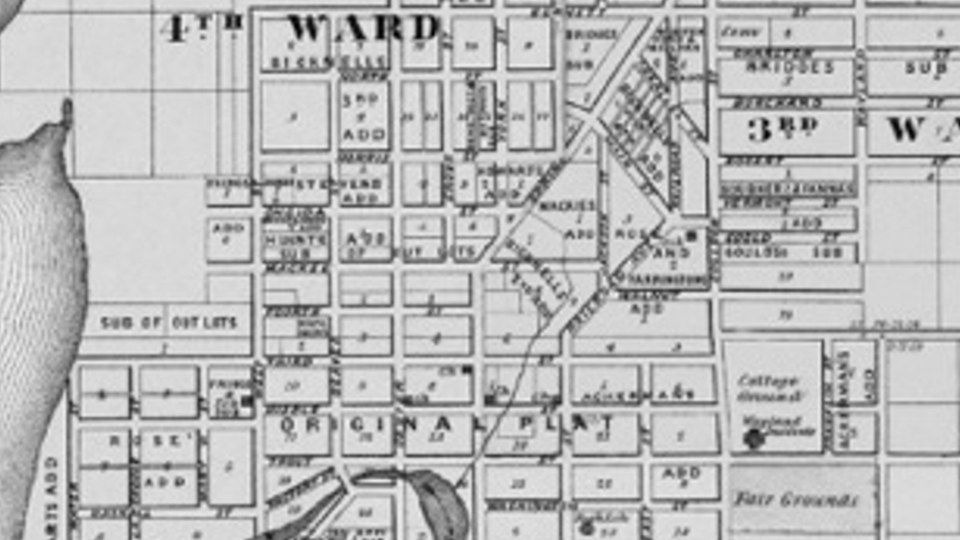
By: Lloyd Clark
When you think about the history of Beaver Dam, what is it that comes to mind? If you run an Internet search for the history of Beaver Dam, you will find that Thomas Mackie and his son-in-law, Joseph Goetschius, followed either a “small stream” or a “river” down from Fox Lake to an area with open fields and abundant timber in March of 1841. Building cabins near to a spring-fed stream, they became the first residents of what would become Beaver Dam and within two years, more than 100 residents called the place home.
If you happen to be a student writing a paper, you would then, no doubt, go into the damming of the river to provide power for grist and woolen mills and how the railroads arrival in 1856 rapidly expanded our population by providing easy access to immigrants from England, Scotland, Ireland, Wales and, most notably, Germany. Perhaps, you would mention the two great fires of the 1860s or how the fact that the Dodge County Fair moved to Beaver Dam in 1886 inspiring the growth of the first large traveling circuses from right here in town. You could, but you would be leaving out the meat in your sandwich, as the history of our town isn’t just about names and dates, it’s about the experience of living here.
Cities are more than just buildings and streets. They are, in their own way, “living” things that grow, expand, retract and sometimes die. Like other living things, cities have “life” experiences that make them what they are, or as ancient philosophers have stated, “the journey is more important than the destination”. To understand “who” Beaver Dam really is, you need to hear from the life stories of the pioneers that founded our great town.
In 1880, the Western Historical Company of Chicago published The History of Dodge County Wisconsin. The book describes Beaver Dam in 1880 as: “Upon the eastern shore of a placid lake, nestling beneath the brow and along the crest of a semicircular hill of such gradual elevation and gentle slope that the housetops in the dimpled valleys on either side are scarcely hidden from one another; shaded by the branches of lovely maples, elms and oaks, clustered here and there together in veritable Eden bowers; wrapped in an atmosphere whose balmy, life-prolonging breath fans you in the face at every step and meets you round the corner like a perfumed zephyr escaped from Paradise, lies the city of Beaver Dam – the Garden City of Dodge County – noted for its palatial residences, and enterprising citizens, and famed for its beautiful women and chivalric men”. Wow, who wouldn’t want to live here? The Chamber would do well to borrow liberally from this description of our fair city.
Now, imagine Beaver Dam 39 years earlier: a fast flowing river; spring fed streams; heavily timbered forest and to the East, a wide expanse of open prairie. The nearest “Yankee” civilization is Fox Lake, a thriving metropolis of 10 whole people, about eight miles to the North. The woods full of deer, squirrel, beaver, bears and wolves.
Native Americans still roamed the area, a fact remarked on by former Congressman S.D. Burchard in a speech to the Sewing Society of the Baptist Church in 1871. Congressman Burchard talks about one of Hannah Goetschius’ first experiences in her new home. Hannah, the wife of Joseph Goetschius, and daughter of Thomas Mackie, the “Patriarch of Beaver Dam”, was alone in their log cabin, Joseph having returned to Fox Lake to get supplies. Hannah became alarmed when she realized that the woods surrounding the cabin suddenly showed the presence of curious Native Americans. Hannah locked the door, put out the fire, and “thus spent a weary and lonely awaiting the return of her husband”. This was only nine years after Black Hawk’s War waged across Southern Wisconsin and Illinois, a fact surely still fresh in her mind. One can only imagine the greeting her husband received when he returned home that evening.
Yes, it is hard to imagine as you drive past the Wal-Mart Supercenter and the ultra-modern YMCA that our town of Beaver Dam was once part of America’s Western Frontier. Rep. Burchard goes on to describe that “the population increased slowly, for the price required to be paid for a home was sufficient to deter all but men of strong and willing hands, and stout hearts”. He wasn’t speaking about the monetary cost; he spoke about the labor and motivation involved in moving to our area. He even states, “… the land was subject to entry at a nominal price, but in toil and hardship, in privation and all the inconvenience incident to the life of the pioneer”.
Contrary to Rep. Burchard’s truthful remarks about what it took to turn the wilderness into viable farmland, The Emigrant’s Hand Book and Guide to Wisconsin (Hand Book), a book written by Samuel Freeman, with the permission of Governor Nelson Dewey, painted a quite different picture.
According to Freeman, the immigrant “…finds the land already cleared, and has only to enclose it” and “The labor of bringing it into cultivation is but trifling”. The Hand Book, written in 1851, was designed not only as a guide with extremely important information for immigrants coming to the States from Europe, but as a powerful advertisement to bring immigrants to Wisconsin, at a time when the California Gold Rush was still news worldwide and draining away the labor force nationwide.
The Hand Book describes our area as “a region of uniform aspect, beautifully diversified with timber openings and small prairies, which in fertility of soil can scarcely be surpassed; there are but few spots combining all the natural elements of health, wealth, and beauty in a degree equal to this. The soil is soft, black and rich, the most exhausting processes make no sensible drain upon its richness. Year after year, always without manure, it yields to the excessive demands of wheat, corn, and the heaviest grains, with no apparent diminution of its powers”. As you can see, Freeman was a very persuasive writer and the population of Wisconsin expanded exponentially after its publication.
Can you imagine the feeling of a farm laborer in Scotland or Germany reading the Hand Book? Just come to Wisconsin, land for farming is plentiful, inexpensive, and almost plowed for you! By taking a short walk in both Oakwood or Beaver Dam City cemeteries and you will see the names of many pioneering folk who did just that. Our own Dodge County Historical Museum displays a copy of the Hand Book in the Old Beaver Dam exhibit. It is surprisingly small for a book that contains so much valuable information, good things really do come in small packages.
The early settlers of Beaver Dam were extremely isolated from civilization. There were four families living in Fox Lake; in Hyland Corners (where Highways A and 33 cross) there was a “bachelor cabin” home to Amasa Hyland, Luther and John Cole and man with the last name of Stanton; and the next nearest home was a cabin “four miles this side of Watertown”. That doesn’t sound all that far, right? At that time, to go to Watertown, where the nearest mill to ground wheat into flour could be found, was an eight-day journey. According to Rep. Burchard, the trip “…required eight days of tedious travel, and on the trip five nights were required to be spent in the open air”.
It didn’t take long, or many trips back and forth to Watertown, to convince our town founders that the fast flowing Beaver Dam River was the ideal location to build a mill to supply our fast growing population. Moses Ordway, new resident, businessman and religious leader, put his knowledge to good use and built the first gristmill in 1842. By this time, “Grubville”, a name given to our town by nearby communities jealous of our growth and ingenuity, was growing fast and the population taken on January 1, 1843 showed a population of 79 people. Beaver Dam was born and a sense of community had grown.
By 1846, the population was on the rise, but the village was much like any of the towns on the western frontier. Rep. Burchard gives a very detailed description of Beaver Dam circa 1846, “The appearance of the village at this time may be imagined from the following summary: The population did not exceed one hundred and twenty souls. On the territory now embraced by the First Ward of the city there were but twenty-one buildings of all kinds; in the Second Ward four; in the Third Ward three; and in the Fourth Ward ten, making in all thirty-eight buildings including private residences, stores, shops, hotels and mills.
“A small cluster of houses on Madison, and a few on Front street, was all of Beaver Dam that could then be seen at one view. All of what is now the First Ward, except the portion lying along Madison street, and perhaps one-fourth of an acre was entirely covered with timber, except a small space where Mr. J.C. Hall now resides, which had been partially cleared to make room for a schoolhouse, and the clearing made by Messrs. Stultz and Ackerman, east of Ackerman Spring. The road ran over the hill diagonally across Mr. S.M. Stevens’ lot and the Union Schoolhouse grounds, past Mr. Ackerman’s, and an Indian trail followed down the river near the edge of the pond.
“As late as the fall of 1848, my informant saw three wild deer quietly lying in the bushes near Edgerton’s livery stable. In Lewis’ mill-pond, the original timber was still standing, dead and unsightly. The entire block and the one on which the Presbyterian Church stands was a pasture, with no improvements upon it except a small clearing made in the spring of 1846, by Mr. Gowdey, where Mr. Hoyt now lives, the Mackie farm and a narrow strip along Front street.
“The Fourth Ward was entirely covered with heavy timber. There was little or no underbrush, except upon the low ground, where an impenetrable thicket was formed by wild plums, grape vines, prickly ash and all varieties of small timber which are still seen in the timber south of the city.”
Wow, that is some difference from the Beaver Dam of today. To put it into perspective the First Ward that he spoke about is the “peninsula” formed between the river and the lake, beginning at Front Street and continuing south/southwest along the shoreline of the lake. As Rep. Burchard stated, except for Madison Street and an quarter acre area, the entire ward was heavily timbered. The Fourth Ward, which ran north of Front Street and west of Spring Street, was also a forest and an “impenetrable thicket” with only 10 buildings standing among the trees.
The Second Ward lay immediately east of the First Ward, with Front/Park Street as its northern border and spanned the town to the eastside border. The only exception was the Fair Grounds, now the Wayland Gym and athletic fields, which were included in the Third Ward. Imagine, only 38 buildings in the entire town – including houses!
The Third Ward ran north of Front/Park Streets and east of Spring Street. Today, where Lincoln Elementary sits on Wayland Street once stood the proud residence of Ingraham Gould and his expansive nursery. Once, the area where the High School is today was the largest tree farm and plant nursery west of the state of New York. It was very much the pride and joy of our community as was the college grounds of the Wayland Institute.
Another surprise that one would find by perusing the early wards map of our city is the area on the south side of Front Street, where the buildings and parking lot for the Elks Club, Dos Gringos, all the way down to Mill Street was underwater. Do you remember the floods that plagued our city in 2008? Mother Nature was apparently trying to rebuild the small lake that once stood there. Pictures of the flooding give you a very good idea of how the area looked in 1840s and I suppose it is somewhat fitting that the water tower stands “right in the middle” of it today.
Rep. Burchard mentions the schoolhouse in his description of an early Beaver Dam. He further describes the first school, built upon an acre of land donated by J. Brower, as “The schoolhouse was a small building about 20×25 feet, one story high, and built in 1844”. The original school would fit neatly into the gym of any of our elementary schools today and educated all grades of students in a single room. The Dodge County Historical Museum, located in the Williams Free Library building on the corner of Front and Spring streets, has an amazing exhibit reproducing an early Beaver Dam one-room school. The “One-Room School House” display, dedicated in May, 2002, contains a number of authentic items used in the original Beaver Dam schools and provides students and adults alike an unique view into our shared past. Our history is still alive in our town and is readily available for those who want to explore it.
It is interesting to note that Rep. Burchard mentions in his 1871 speech, that the “old settlers” were already reminiscing about the “halcyon days of Beaver Dam” as if those days were already a distant memory by then. He continues by stating, “There were burdens grievous and heavy to be borne, and, shared by all, they were light to each. If there was joy in one household, smiles wreathed the face of the entire settlement; if there was grief, tender and sympathetic counsel and words of cheer robbed sorrow of its gloom. A grief thus shared is lighter to the stricken heart. Those were the truly happy days, and to them the eyes of more than one the early settlers of Beaver Dam turn with longing, even as the eyes of an exiled angel turn toward the heaven in which he has forfeited”. In this, Rep. Burchard is wrong. While neighbors may not share every happiness and sorrow with their fellows as they once did in town; and though political points of view or self-interest may separate us for a time; the citizens living today in Beaver Dam care every bit as much for our town and our neighbors as the settlers did back then. But as was evidenced a few years ago when the river flooded downtown, our citizens, whether or not their homes or businesses were threatened, arrived in droves to help our firefighters fill sandbags to save the homes and businesses of people they didn’t even know. It didn’t matter that they were strangers, they were neighbors and it’s a given that Thomas Mackie was looking on from somewhere with a broad smile on his face.
There is a great deal of history in our village by the lake. Where most towns and cities are willfully ignorant of their past, we readily embrace it. You can visit the graves of our city founders; you can stroll past and admire the eight buildings that Beaver Dam boasts on the National Register of Historic Places; you can drink, during the summer, from the “Sacred Springs” in Swan Park; and taking in a sunset at Edgewater Park on Beaver Dam Lake, you can get a true feeling as to what makes our small corner of the world so special. Beaver Dam is alive and those of us who call it home are all related.




